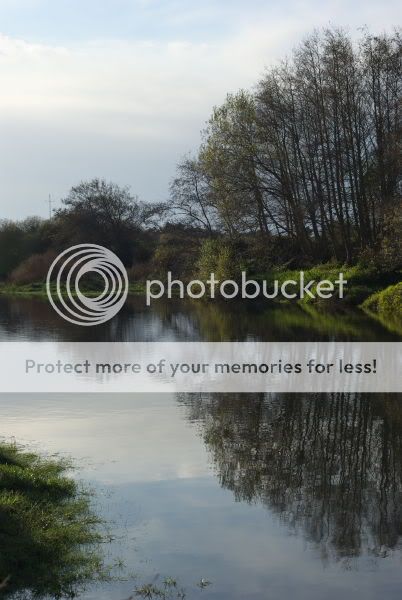Actually, the previous photo was based on the one below, a low key shot taken on an overcast Winter morning. There was no storm before or after the shot...

 The only post-processing consisted on adjusting the tone curve in Silkypix, giving it a slight S shape instead of the default straight line. This increased the lightness of the lighter areas and made the rest darker. By adding an appropriate number of control points on the curve, I was able to give it the appropriate shape and obtain the result I was looking for. It's interesting how the sky became much more dramatic after this transformation.
The only post-processing consisted on adjusting the tone curve in Silkypix, giving it a slight S shape instead of the default straight line. This increased the lightness of the lighter areas and made the rest darker. By adding an appropriate number of control points on the curve, I was able to give it the appropriate shape and obtain the result I was looking for. It's interesting how the sky became much more dramatic after this transformation.Unlike Lightroom, which allows only for changing pre-defined sections of the curve, Silkypix lets one add any number of control points, providing a high degree of control over the lightness adjustments.
In most applications, when the mouse cursor is placed over the photo, the corresponding point is shown on the tone curve. This way the user can identify exactly which are the parts of the curve that should be made lighter or darker. Sometimes, even subtle adjustments have a very visible effect.
I find using tone curves (sometimes just called "curves") an essential part of post-processing, much more intuitive and effective than simply adjusting contrast/brightness levels.
Take another example. The next photo was taken on the same day:
 Pentax K10D + Zeiss Planar 50/1.4
Pentax K10D + Zeiss Planar 50/1.4This is the original image:

 This time the purpose was to decrease contrast and lighten up the darker areas, so as to create a version with a softer light. The tone curve used was now a flipped S. Many may prefer the original, higher contrast, image. But I like the processed version, as it somehow reminds me of XVIII century naturalist paintings.
This time the purpose was to decrease contrast and lighten up the darker areas, so as to create a version with a softer light. The tone curve used was now a flipped S. Many may prefer the original, higher contrast, image. But I like the processed version, as it somehow reminds me of XVIII century naturalist paintings.Of course, S shapes are not the only possibilities for tone curves. I might post later on the power of the "double S" curve...

1 comment:
Nice example of curves use, though I would push over a litle bit more the S, without going to much into the "digital" effect that could really ruin the shots. We see a lot of those, but won't expect it from Frank, a much more subtle guy than that...
Post a Comment